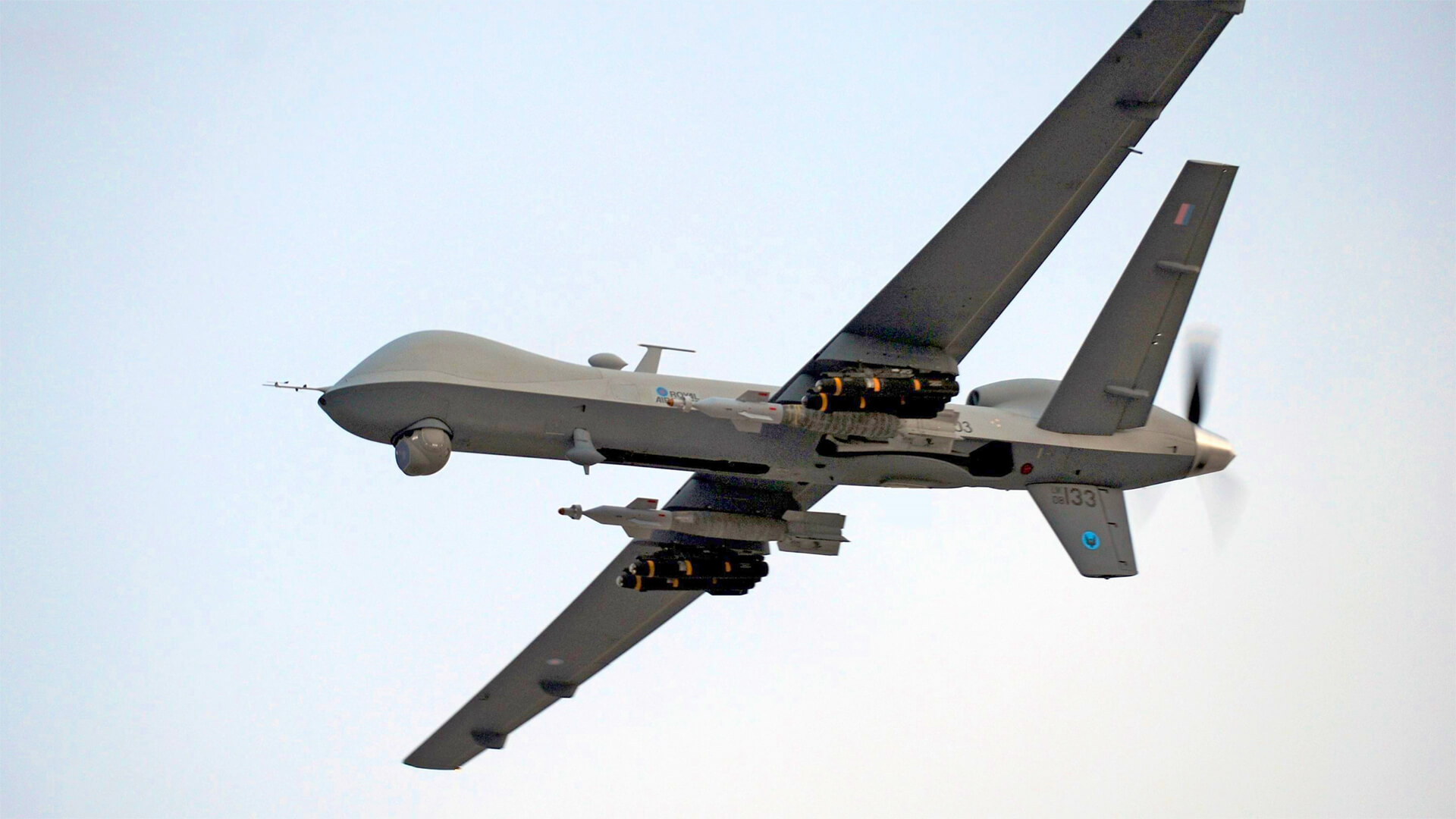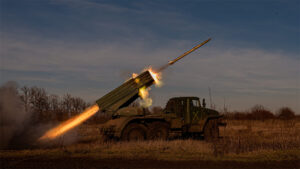Ukraine managed to sneak some drones by Russian air defenses and hit the Ust-Luga oil refinery and loading facility. The attack didn’t cause significant damage, but it disrupted production and shipping operations.
The successful attack has given us a glimpse at Ukraine’s capabilities and what might be in store for the future. The Russian’s response to the drone strike pokes glaring holes in the Russian system, specifically the lack of qualified workers and immense strain placed on the limited skilled personnel actively working.
This attack is a reminder of how the Russian oil industry can impact global oil supplies and the massive vulnerabilities within the system. Sanctions have also intensified in a weird sort of way following the attack, which has further impacted the flow of oil to Europe.
Here at Zeihan On Geopolitics we select a single charity to sponsor. We have two criteria:
First, we look across the world and use our skill sets to identify where the needs are most acute. Second, we look for an institution with preexisting networks for both materials gathering and aid distribution. That way we know every cent of our donation is not simply going directly to where help is needed most, but our donations serve as a force multiplier for a system already in existence. Then we give what we can.
Today, our chosen charity is a group called Medshare, which provides emergency medical services to communities in need, with a very heavy emphasis on locations facing acute crises. Medshare operates right in the thick of it. Until future notice, every cent we earn from every book we sell in every format through every retailer is going to Medshare’s Ukraine fund.
And then there’s you.
Our newsletters and videologues are not only free, they will always be free. We also will never share your contact information with anyone. All we ask is that if you find one of our releases in any way useful, that you make a donation to Medshare. Over one third of Ukraine’s pre-war population has either been forced from their homes, kidnapped and shipped to Russia, or is trying to survive in occupied lands. This is our way to help who we can. Please, join us.
TranscripT
Everybody. Peter Zine here coming to you from above the very active Kilauea volcano. That’s the crater that kicked off last year. Today we’re going to talk about an assault that happened last week. The Ukrainian sent a squad of drones north out of Ukraine over Russian airspace into the gulf of finland to attack the Ust-Luga…hope i pronounce that right.
Oil refinery and loading facility now north mali, this wouldn’t really matter because normally drones, as we’ve seen, can’t get through any sort of meaningful air defense. But the Russian air defense in this area appears to be just as crappy as it is everywhere else in the country. So a bunch of them got through. The other reason I would normally care about this is most refineries.
Everyone gets all you want on. They expect Hollywood explosions when a bomb goes off in a refinery, you know? Yeah. Keep in mind scale here, most refineries are over a square mile and this one’s no exception. There’s a lot of standoff distance among the different facilities. So if something does blow, it doesn’t blow up the whole thing. And crude oil at room temperature isn’t even flammable.
So the warheads that these bombs can carry, which are less than £100, probably with the models that were used probably under £20, it’s not that you can’t do damage, but you can’t do real damage. But this is not just a refinery. This is also a loading facility. And in a refinery, once you’ve made your fuels, fuel’s being more flammable than raw crude.
You then put them into a truck or a pipe and send it away With a port facility you put into a big giant tank and then a large vessel comes by and sucks off what it needs and goes on its merry way. And so the tanks themselves are the vulnerable points here. Now, judging from the size of the explosions and the fires that were started, the tanks were not hit.
That’s just something that you should have in the back of your mind when you evaluating. When somebody says a refinery, a certain piece of energy infrastructure was hit, you know what to look for. What’s interesting here are two things. Number one, it took the Russians more than three days to put out the fire and they put it out the wrong way, using water in, you know, the near Arctic winter, which caused a lot of water to freeze and then expand and break more infrastructure damage assessments are still underway.
We don’t know how bad it was. And it had this been a normal attack, we would have known within 24 hours whether or not anything substantial had been done. But here we are nearly a week out and we still really don’t have any more but the vaguest ideas and the facility is shut down. Now, there’s a lot of reasons why this matters.
Number one, while the Europeans have put sanctions on seaborne crude, seaborne oil product is in a loophole. So they were still taking stuff from this facility. And with its shut down, all of a sudden sanctions have gone up to a whole new level. And we’re going to have a very good idea of how the Europeans can absorb or not.
This newest change. Quick add on the Ukrainian attack on US. Luger was on Sunday, the 21st in less than 72 hours later. The Russians were able to begin shipping out again. However, what is being shipped out is primarily oil, almost exclusively oil and something called condensate, which is kind of a raw product somewhere between natural gas and oil.
The actual refining complex remains completely offline. There’s no naphtha, there’s no fuel, there’s no intermediate products that are coming out at all. And at present, the Russians are still completing their damage assessments. And at the pace they’re going, we probably won’t have any information on the level of damage until probably March. And then with their very, very thin remaining skin of skilled labor, they can start talking about repairs.
Second, this is the first significant Ukrainian attack against a significant economic asset of the Russian Federation. And at least on the surface, it looks like it was much more successful than they ever thought was possible. That means that the northern parts of the Baltic Sea and the Gulf of Finland are suddenly in a danger zone that is well within the Ukrainians proven range of operation.
Now, the Ukrainians and the Russians haven’t really gone against civilian shipping right now, but I can’t think of a better target than an oil loading and refining platform such as what we’ve got. And it was ooyala. Again, apologies for the inaction. We’re just going to put the spelling right here so you can see what I’m having the trouble with.
Okay, So this is the sort of thing we should now watch for in the future, because this is not the only facility of this type which is within the Ukrainians reach. There are a number of facilities that no virus sees on the Black Sea and two ops on the Black Sea and closer to St Petersburg, also on the Gulf of Finland.
And now that the Ukrainians are proving that a few things can slip through, you can bet that they’re going to target all of them and all told, if you look at all of the infrastructure combined, it’s combined export and throughput capacity is in the vicinity of three and a half million barrels a day, which is about three and a half percent of global output.
So if you put a meaningful dent in the export infrastructure, it’s impossible for the Russians to shunt this stuff somewhere else. There’s nowhere else to go. And so it just backs up through the system. There’s also one other thing to look at the fact that the damage control crews proved to be so incompetent is something that we’re starting to see at the edges as the Russian economic system frays.
The Soviet educational system collapsed back in 1986, which means that the youngest people who are worthy of terms like engineer, turned 64 this year. And so when I think of fire suppression, I think of something that normally I could not just pick up the hose and go do it. You want someone with specialized training, and especially if you’re talking about petroleum, natural gas or refined product fires, you definitely want someone has some idea what they’re doing.
Russia is running out of those people. It’s not just that a million people have fled the country and a half a million have been drafted and committed to the war being killed. They don’t have much of a skilled labor pool left. And what they do have is being dedicated to the war itself. Air defense in the vicinity of the war, or the military industrial complex to keep the war going.
So we’re seeing some very serious phrase with the system. This this is not the sort of thing that they should have gotten wrong. That fire should have been put out very quickly with things like foam, and it wasn’t. And that suggests the Russians ability to maintain their overall system is starting to feel the strain of all of this.
And they don’t have a backup plan. There isn’t enough labor in the country to redirect from somewhere else, especially skilled labor. All right. That’s it for me. Take care.








